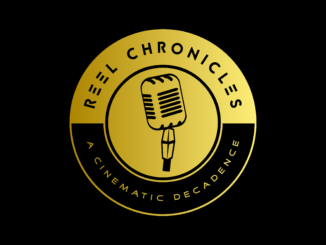Let’s get one thing out of the way: Writing this 20th-anniversary piece on Disturbing Behavior is not meant to convince you that it’s a good film. It hasn’t gone down as a teen horror classic and unless you’re a huge fan of late 90s horror, you might’ve forgotten it even existed. The movie was part of the new wave of teen horror films that were beginning to get cranked out after the critical and financial success of 1996’s Scream. Every studio was looking for their Scream and MGM believed they had it with this film. Viewed today, Disturbing Behavior appears to be a bit of a mess. At 83 minutes, you can tell it went through a war in the editing room and that makes it come off as a jumbled mess. I suspected, even back in 1998, that this wasn’t the original vision for the film and I gradually learned that Disturbing Behavior had far better intentions which is why I happen to be one of its proud defenders. It’s by no means perfect, a trait that the fictional town of Cradle Bay strives to be, but there is a solid idea here and director David Nutter clearly had the film stripped from him in a classic example of studio interference.
Disturbing Behavior, while a teen horror film, went a different route than most of its counterparts. Scream brought back the sub-genre of the slasher film and that success continued in 1997 with the release of I Know What You Did Last Summer, which surprised industry experts when it topped the box office for three weeks in a row. It would be easy for MGM to go after another slice and dice picture but writer Scott Rosenberg and director David Nutter, who was a director and producer of The X-Files at the time, decided to a little something outside the box. The approach would be a sort of teen version of 1975’s The Stepford Wives, a film that follows a young woman who comes to the quaint town of Stepford with her family and soon discovers there lies a sinister truth in the all too perfect behavior of the female residents. Disturbing Behavior would take that sinister eeriness of this is too good to be true and apply it to a town that wants perfection from its younger residents.
In Disturbing Behavior, Steve (played by James Marsden) moves to the town of Cradle Bay with his parents and his sister after the apparent suicide of his older brother, played by Ethan Embry. Steve senses something off about the residents of Cradle Bay, particularly a group of far too perfect teens called The Blue Ribbons, who somehow make bake sales and class participation seem very creepy. They’re initially welcoming to Steve but he is soon intercepted by Gavin, played by Nick Stahl. Gavin is a bit of a burnout and seems a tad too paranoid but he’s much more engaging than anyone in The Blue Ribbons so Steve gravitates towards him. Gavin is joined by two friends: U.V. (Chad Donella), an albino stoner who probably knows more going on than he seems, and Rachel (Katie Holmes), the late 90s image of what studios thought dark goth chicks looked like at the time. She has a nose ring, she swears, she smokes and she’s a long way from that Dawson and his Creek.
Gavin, despite appearing like he smokes too much weed and doesn’t have much of a future, is acutely aware of what’s going on and is pretty vocal about it. Some of the members of The Blue Ribbons used to be his friends, burning out on the same level he continues to burn out on but one day they began coming back different as if they have been lobotomized or programmed in some way to be perfect. His friends, particularly Rachel, doesn’t seem to buy or care about his theory and Steve is too new to know whether he’s full of it or not.
It turns out that everyone should be listening to Gavin because the town of Cradle Bay, most noticeably the adults of town, have been dabbling in underground dealings with the high school’s psychologist, Dr. Caldicott (Bruce Greenwood). He’s developing sinister methods to make the kids of the town perfect by any means necessary and once the bad apples go off the rails, they vote on putting their kids through the program. The horror comes in when it’s clear that his method has a few glitches. When The Blue Ribbons don’t get what they want, they malfunction in a big way and resort to violent tactics and sometimes their impulses lead to deadly consequences. The opening scene has one of them in a car with a girl and while he politely tries to turn down her advances for oral sex because he has to “save his fluids” before a big game, she persists and during the act his eyes glow red and he eventually breaks her neck (not too mention he gives the parting blow of calling her slut after he tosses her dead body off of him). He’s not the only one who goes off the rails as one girl Blue Ribbon slams her face into her mirror when Steven turns her down and another doesn’t act too kindly to Rachel refusing to go out with him.
The central idea of the film is quite intriguing. The small town element of it adds potential suspense and the idea of the town’s parents plotting against the kids presents a sense of isolation. If the authority figures are all in on it, how is anyone safe? Writer Scott Rosenberg and director David Nutter have tried to take a Twilight Zone-style episode and make it into a motion picture that could’ve been quite effective but behind the scenes problems would derail its potential.
Once the film wrapped, David Nutter presented a 115-minute director’s cut to the studio. He was proud of this cut and it’s reportedly what he envisioned the film to be. His cut features more character development and fully explains the plot details that lead to the town taking these measures against the kids. This cut was shown to MGM President Michael Nathanson and all reports indicate that he loved it.
After the cut was delivered, the film had its first test screening on May 15 of 1998 in Plano, Texas. 324 audience members filled the theater with people ranging from ages 15-24, the target audience of the film. Apparently, they responded fairly well to the film but Nathanson was worried about the few who had complaints about aspects of the film, which included criticism about too much character building and the film’s ending in which Gavin dies. After this screening, Nutter was ordered to cut down the film to 95 minutes and he did this, despite having objections.
Two weeks later, the film had a second test screening in Westlake Village which also went well but at this point, MGM had complete control of the film and the ordered him to shoot a new ending where Gavin is alive and a teacher under the control of The Blue Ribbons. The movie was also re-cut with the help of MGM’s VP of production editing, George Folsey Jr. The scenes he cut down or deleted completely were Steve’s flashbacks about his dead brother, more exposition and character scenes, and scenes between the teens and their parents were also cut because MGM ordered that most of the scenes with adults be cut because it wasn’t interesting to the target audience.
In June of 1998, the film had two more test screenings in San Diego and the response was more varied this time. There were a lot of complaints about Gavin being alive in the new ending, which is something MGM pushed for. David Nutter almost wanted his name removed from the film at this point because all of these cuts created a film he didn’t intend to make.
There was a fourth test screening where the film had been cut down to 72 minutes and after the screening, someone from MGM proudly said “well, we didn’t have any walk-outs”, to which Nutter replied, “who had time to walk out?” I can understand his anger, his 115-minute cut was now shaved to a mere hour and twelve minutes.
The film had a fifth test screening 11 days before its release where scenes were added back in to create the 83-minute final cut that audiences got and reportedly the screening was well-received and MGM seemed very proud of the numerous cuts and edits they made.
Despite all the screenings and choices of what to take out and add, the film felt like a hack job to most who saw it. The film holds a rotten score of 35% on Rotten Tomatoes and became the first box office speed bump of the teen horror movie resurgence. The film opened at number seven with $7 million but collapsed in the subsequent weeks before crashing out at $17.5 million by the end of its run. The damage wasn’t too bad since the budget was only $15 million but it wasn’t what MGM hoped for. Hell, some areas only ran the film for a week before yanking it from their screens.
My first sign that Disturbing Behavior could be better than the sum of its parts was when I got the film on DVD which featured 11 deleted scenes that really showcased some of the exposition and character development that got lost in the final product. It was then I realized that David Nutter couldn’t and shouldn’t be blamed for how the film turned out, he clearly tried to make something more significant but the studio got in his way.
Then I learned that fans made their won fan-edits of the movie which puts the deleted scenes back in. With the scenes re-added, the film clocks in at 103 minutes, still below the 115-minute director’s cut that David Nutter submitted. Sadly, we will never get his official cut of the film. Nutter has said that the studio has blocked it from being released and what’s even more frustrating is that Nutter has shown this cut to horror film journalists at Fangoria Magazine and they all praised the cut saying it’s significantly better than the theatrical version.
So my defense of Disturbing Behavior 20 years later is that sometimes a film’s behind the scenes legacy plays out a bit more interesting than the film itself. The theatrical cut is fun but very flawed and I can see why many don’t like it but when you realize what Nutter was attempting to do before the studio blocked most of his efforts, it makes you really wonder what might have been. Could Disturbing Behavior be considered a sort of cult classic if we had his original cut? With a movie that deals with a town that strives for perfection, this it’s interesting that we have to settle for an imperfect finished product.





